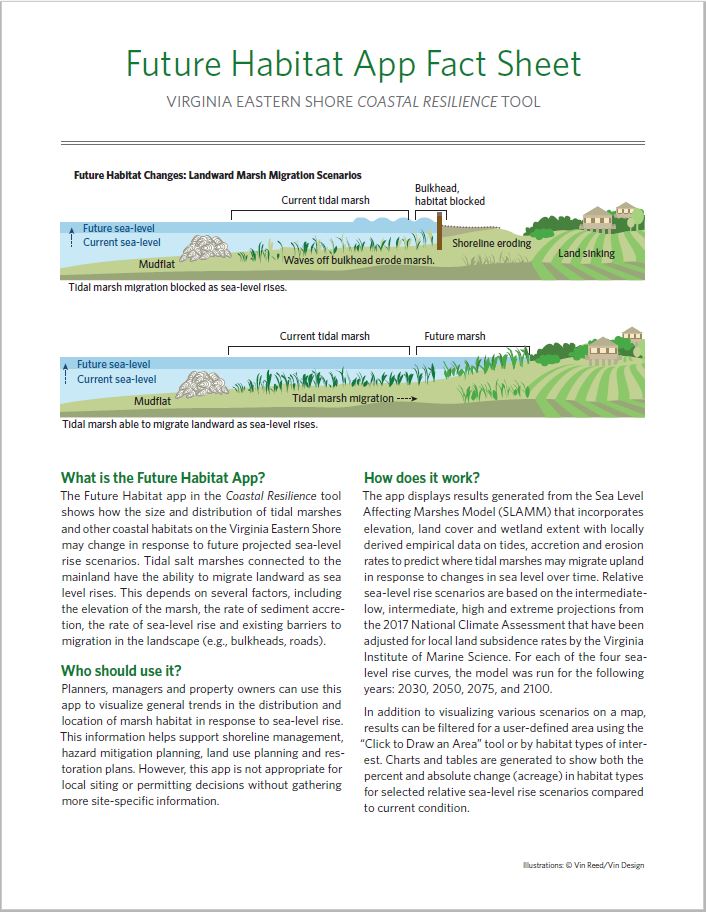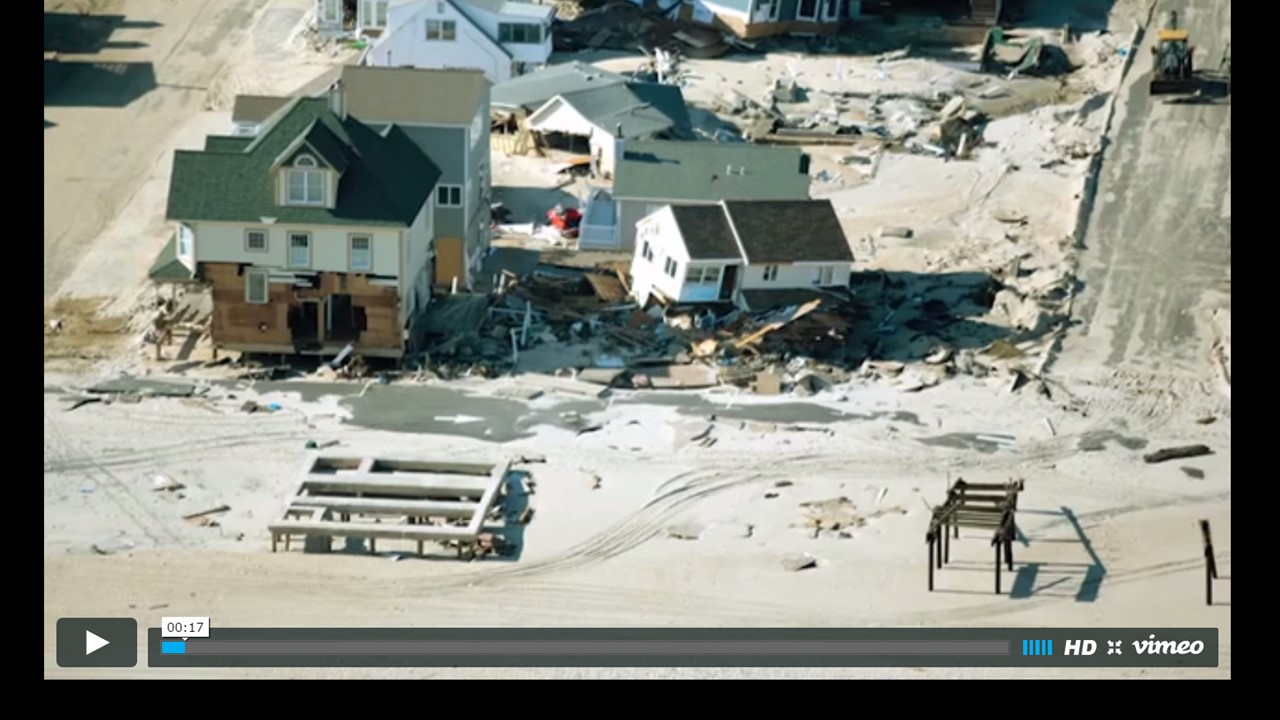Future Habitat
What is the Future Habitat app?
![]() The Future Habitat application evaluates where coastal habitats might move inland due to rising sea levels. Coastal wetlands will change and may move landward as sea level rises. The Future Habitat app helps visualize how these habitats may change and migrate inland over time. This app allows users to examine changes in coastal habitats under different sea level rise scenarios.
The Future Habitat application evaluates where coastal habitats might move inland due to rising sea levels. Coastal wetlands will change and may move landward as sea level rises. The Future Habitat app helps visualize how these habitats may change and migrate inland over time. This app allows users to examine changes in coastal habitats under different sea level rise scenarios.

Who should use it?
Coastal Managers
This app allows coastal managers to identify which coastal habitats may experience the greatest change, which areas of natural and human communities may be most vulnerable to sea level rise, and consider which species may be especially vulnerable to these changes. This information is useful during development of land acquisition, species management, shoreline management, or restoration plans.

The Future Habitat comparison and reporting functions help inform coastal managers about where and how coastal habitats might change under various future sea level scenarios.
How does it work?

Future Habitat application user interface.
Users can visualize, interact with, and compare results from the Sea Level Affecting Marshes Model (SLAMM). SLAMM is a numeric model that incorporates digital elevation data and the major processes affecting habitat change, to simulate potential future impacts of long-term sea level rise on coastal wetlands and shorelines.
What are the strengths and limitations?
The Future Habitat app provides a simple mechanism to visualize simulation results from the SLAMM model. It allows users to dynamically interact with the results to examine habitat change/loss and discover opportunities for adaptation to guide their coastal management planning processes.
However, it should be noted that all SLAMM model results are subject to uncertainty due to limitations in input data, incomplete knowledge about factors that control the behavior of the system being modeled, and simplifications of the system (CREM 2008).
Where is it being used?
In Old Saybrook, Connecticut, coastal salt marsh is and will continue to advance inland due to rising sea levels. The Future Habitat app was used to inform the community about where marsh advancement will likely occur and to help identify adaptive solutions to improve community resilience. The Community Planning app was also used to overlay parcel data to identify protected open spaces that can accommodate salt marsh advancement with progressive resource management approaches.
These tools helped identify 214 acres of open space parcels that are suitable for future wetlands. If managed correctly, these areas provide space for marshes to advance inland ultimately providing multiple economic benefits like flood reduction, water quality, and public amenities.
With this information, stakeholders can better plan to accommodate future changes in habitat location and strategize new land use policies and smarter growth approaches to improving resilience in their communities.
Learn more about how the Future Habitat app was similarly used in Stratford, CT.

The Future Habitat App was used to identify where marshes might advance inland under various future sea levels in Old Saybrook, CT.
This app is also being used in California, Southeast Florida, Gulf of Mexico, New York.
Who helped develop it?
The Future Habitat app was developed through a partnership between The Nature Conservancy and the University of Southern Mississippi.


